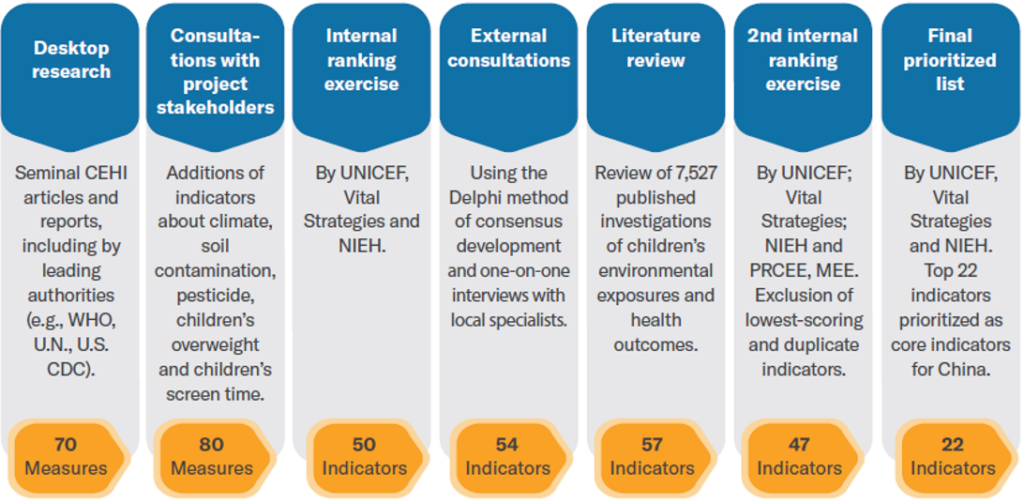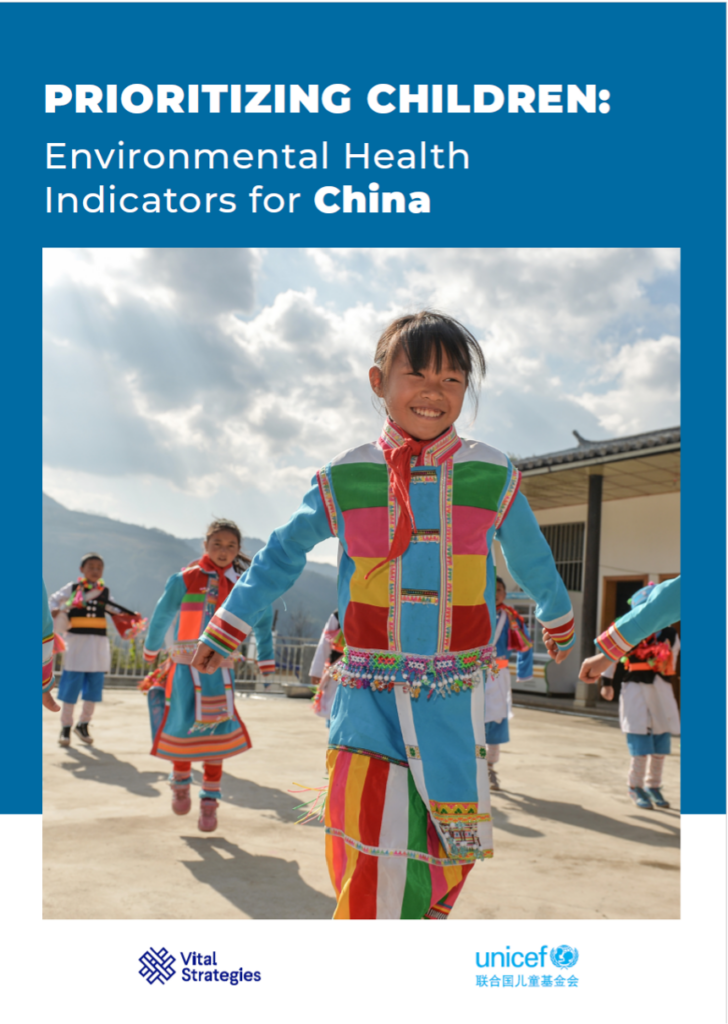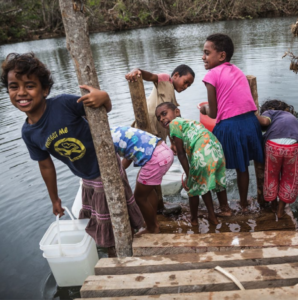While environmental health issues are clearly leading causes of child illness and death, many low- and middle-income countries lack country-specific, systematic data needed to develop approaches to improving children’s health and reducing, minimizing and preventing environmental risk factors.
The development of a children’s environmental health indicator program can provide a solution for governments to describe the presence and distribution of hazards, exposures, social context, health impacts, and government actions to address them. For example, health officials can see and compare the geographic distribution of the prevalence of childhood asthma and indoor air pollution, providing a basis for epidemiological hypothesis and subsequently facilitate the development of an evidence-based intervention and track its success.
Why It Matters
- Children are the least responsible for climate change and environmental degradation, yet they will bear the greatest burden of its impact.
- Globally 1.7 million deaths in children, which is one in four childhood deaths, can be attributed to environmental hazards, and these figures are expected to rise as climate change magnifies the world’s most serious environmental risks.
Our Current Focus
- China
- Brazil
Our Approach
We worked with countries to develop their own indicators based on their context as each country’s government, population, and environmental threats are vastly different. Indicator selection took into account local stakeholders’ opinions as well as global evidence of associations between the climate, environment, and health. The indicators were constructed to be comparable across different geographies—international, national, and sub-national.
CEHI surveillance can be based on existing data for each indicator—governments and local organizations often have already been collecting relevant environmental pollution and health outcome data routinely, it is cost-effective to pull together and make use of these data.

CEHI can strengthen children’s environmental health surveillance and risk management capacities as well as decision making linked to public health and environmental policies. Carefully managed CEHI program can also help countries strengthen cross-sector collaboration and achieve the environmental health goals that are part of the UN Sustainable Development Goals. Furthermore, CEHI can frame efforts to engage the public in reaching and acting on a common understanding of how to improve the well-being of children. All this, without having to invest in expensive novel data collection and data systems, and without waiting the years it takes to conduct new epidemiologic studies.
Our Results
Vital Strategies and UNICEF partnered with the governments of China and Myanmar (prior to the coup) in a multi-stakeholder consultative process to create recommended lists of children’s environmental health indicators—work that recently won the World Health Organization Western Pacific Innovation Challenge: Innovation for the Future of Public Health in the Healthy Environments and Populations category.
CEHIs developed for China are endorsed by 22 local stakeholders from government’s health and environment sectors, research institutes, and UN agencies. The National Institute of Environmental Health of China CDC has adopted these indicators and with support from UNICEF and Vital Strategies, NIEH China CDC is working on building a CEHI data portal, which is a public-facing web-based platform that pulls together existing CEHI aggregated data and presents them in easy-to-understand and interactive ways. The team is also drafting a Profile for Children’s Environmental Health in China based on data analysis results from CEHI data, with the goal to depict a full picture of children’s environmental health problems in China and inform policy making.

We are very proud of the achievements in China and sincerely believe that similar program in other countries would also contribute to the country’s children’s environmental health improvement. Just recently, we started a collaboration with UNICEF Brazil on CEHI following the same steps China has taken.
With these successful experience, we are actively looking for opportunities initiate CEHI work in other countries, and we welcome inquires and collaborations from governments, philanthropies, and children’s advocates.
